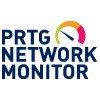Unveiling the Best Auvik Alternatives for Network Monitoring
Auvik stands out as a robust remote monitoring and management (RMM) solution, specializing in network infrastructure like switches, routers, and firewalls. It provides deep insights into client networks and automates complex tasks, making it a favorite among Managed Service Providers (MSPs). However, every organization has unique needs, and exploring Auvik alternative options can lead to a more tailored and efficient network management strategy. Whether you're seeking a more cost-effective solution, different platform support, or a specific feature set, a diverse range of alternatives are available to meet your network monitoring demands.
Top Auvik Alternatives
Finding the right network monitoring tool can significantly impact your operational efficiency and client satisfaction. Here's a curated list of top Auvik alternatives, each offering distinct advantages for various network management scenarios.

Zabbix
Zabbix is a powerful open-source monitoring solution that is a strong Auvik alternative, widely used for gathering and analyzing accurate statistics and performance metrics. It's an excellent choice for those seeking a free and highly customizable platform for network and server monitoring, available on Linux, FreeBSD, OpenBSD, and Self-Hosted environments. Zabbix includes features like Azure integration, custom dashboards, and hardware monitoring, making it a comprehensive solution for diverse monitoring needs.

Domotz
Domotz offers a premier Remote Network Monitoring and Management platform, providing a complete and cost-effective solution for managing customer networks. As a commercial Auvik alternative, Domotz supports Linux, Web, Android, iPhone, and iPad platforms. Its rich feature set includes alerting, remote management, network discovery, real-time latency analytics, and a topology map, making it ideal for MSPs needing extensive remote capabilities.

PRTG Network Monitor
PRTG Network Monitor is an advanced network monitoring solution, available as a freemium offering for Windows. This Auvik alternative excels in monitoring network up/downtime, traffic, and usage, with features like availability, performance, and bandwidth monitoring via SNMP. Its comprehensive capabilities make it a popular choice for organizations needing detailed insights into their network health.

CloudRadar Monitoring
CloudRadar is a powerful, simple, and affordable Server and Network Monitoring solution, serving as a robust commercial Auvik alternative. It supports Mac, Windows, and Linux, and integrates with various technologies like Zabbix and cPanel. CloudRadar offers extensive features, including CPU, memory, disk, and process monitoring, real-time dashboards, uptime monitoring, and Slack integration, making it a versatile choice for both server and network oversight.

CloudStats
CloudStats provides cloud-based network monitoring software that allows you to monitor servers, virtual machines, cloud environments, and websites. As a freemium web-based Auvik alternative, it offers essential server monitoring features, making it a straightforward option for those primarily focused on cloud and server health.

LANState
LANState is a simple Network Management System (NMS) for Windows, featuring network topology mapping and device monitoring functions. As a freemium Auvik alternative, it allows users to add hosts to a graphical network map and monitor their state in real-time, offering a user-friendly interface for basic network oversight.

Kaseya Network Monitor
Formerly Intellipool Network Monitor, Kaseya Network Monitor (now Kaseya Network Discovery) is a commercial Windows-based solution that allows you to find, catalog, deploy, view, manage, and report on all network devices. This Auvik alternative offers comprehensive network and server monitoring, making it a solid choice for organizations needing extensive discovery and management capabilities within the Kaseya ecosystem.
Ultimately, the best Auvik alternative for your organization will depend on your specific network size, complexity, budget, and desired feature set. We encourage you to explore these options further to find the perfect fit that aligns with your operational goals and enhances your network monitoring capabilities.